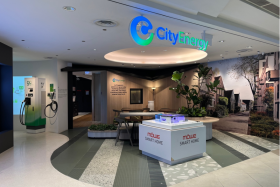Confessions of a zoo exhibit designer
Zoo exhibit designer says only downside to work is not being able to enjoy the zoo like a visitor
With a proud smile, Mr Cham Tud Yinn, 50, leads us around the Amazon Flooded Forest - the highlight exhibit of River Safari, which features manatees swimming among large tree trunks in a water tank.
Mr Cham is the director of exhibit design at Wildlife Reserves Singapore and has worked on projects in the Singapore Zoo and River Safari, including the Flooded Forest, the largest freshwater aquarium in the world and one of Mr Cham's favourites.
He said: "We wanted to mimic how trees in the Amazon become submerged when water level changes."
Although his work revolves around animals, Mr Cham rarely comes into contact with them. Instead, his job involves nitty-gritty details such as plumbing and filtration.
Using the Flooded Forest as an example, he said: "It is a big exhibit, and there is a lot to consider - the volume of water in the tank, how to filter the waste from the water such that it looks clean."
Mr Cham, who joined the zoo more than 22 years ago, had been a fan of nature since he was young and had always wanted to work in a zoo.
Trained as a mechanical engineer, Mr Cham took a pay cut to apply for a position within the zoo.But the father of one said his education is still helpful.
He said: "Exhibit design needs many skill sets - engineering, architecture, landscaping and zoology."
One of the challenges is balancing different needs and translating them into buildable exhibits.
He said: "Everyone wants different things - visitors want to see animals up close but animals have their own needs; they need to hide away. Some species cannot be in the same exhibit as others while we want the exhibit to look beautiful.
"You have to cater to these needs yet still make something that looks good."
For Mr Cham, this difficult process begins as sketches as he draws out his ideas.
Then he makes 3D models to get a better sense of how the exhibit would function and look from different angles before approaching researchers, experts, zookeepers and the maintenance department for their input.
He also regularly travels to observe animals in their natural habitats to better understand the environments they live in and what they need.
He said: "Animals need choices. They want to play or show their faces or hide away, they need those options.
"Or course, they also need to be housed with animals that they can live in harmony with, so in an exhibit with different species, the animals we pick to live together have to be considered too."
Having worked in the zoo for so long, it is akin to a second home for Mr Cham.
He walks through it barely noticing the deafening calls of gibbons nearby.
He said: "I am so used to it, it is like background noise to me."
The downside to the job?
Although he often takes his seven-year-old daughter to the zoo, he cannot enjoy the experience like a normal visitor.
Mr Cham said with a chuckle: "I love the zoo but I am here five days a week. If I come back on the weekends, it feels just like coming to work.
"Even as a visitor, I am always on the lookout for an issue here or a plumbing problem there that needs fixing."
Get The New Paper on your phone with the free TNP app. Download from the Apple App Store or Google Play Store now


